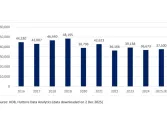
Edge computing growth to enhance insurance sector: Allianz Commercial
It boosts the sector by automating workflows and enhances real-time data analysis.
Whilst global investment in edge computing forecasted to rise by 14% year-on-year to $228b in 2024, it is also expected to boost the insurance sector, reported Allianz Commercial.
Edge computing enhances claims processing by automating workflows and enabling real-time data analysis, Allianz Commercial’s Edge computing and cyber security report revealed.
IoT devices, including industrial sensors and fleet telematics, help insurers assess risks, detect fraud, and validate claims efficiently.
Sensors in commercial buildings monitor environmental conditions, allowing insurers to intervene early in cases of overheating machinery or gas leaks.
Telematics devices in fleet management provide real-time data on vehicle usage and accident conditions, improving claims accuracy.
The technology also enables personalised insurance models, such as usage-based insurance (UBI).
Telematics devices adjust premiums based on driving behavior, whilst wearable devices in health insurance track activity levels to offer tailored plans.
Smart home sensors detecting risks like fires or burglaries allow insurers to adjust policies proactively.
Despite its advantages, edge computing increases cyber security risks due to its decentralised nature.
The expanded attack surface makes devices more vulnerable to breaches and data theft. Insurers must adapt risk models to cover cyber incidents, including business interruptions and recovery costs.
Determining liability is also complex, as responsibility for breaches can extend across device manufacturers, software providers, and users. Clear policy terms will be necessary to manage these risks effectively.
To maximise the benefits of edge computing, insurers must invest in research and development, collaborate with technology providers, and implement tailored incident response strategies.



















 Advertise
Advertise






